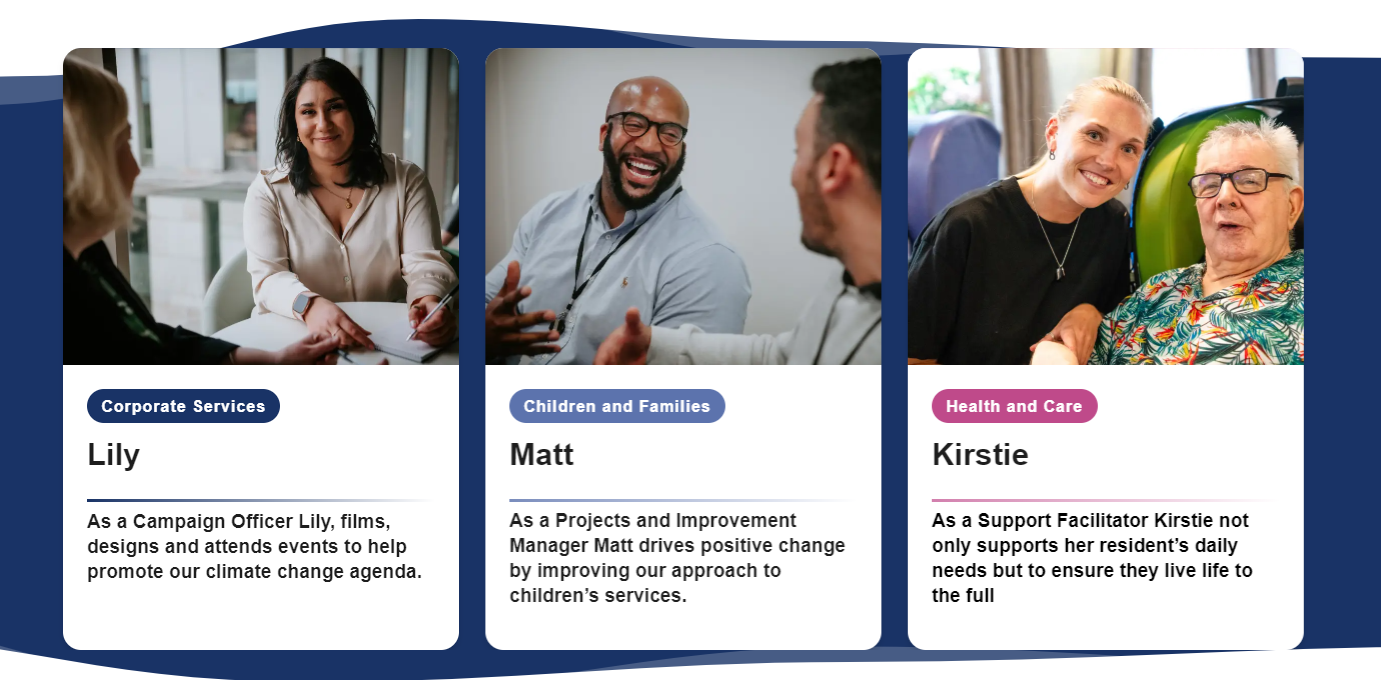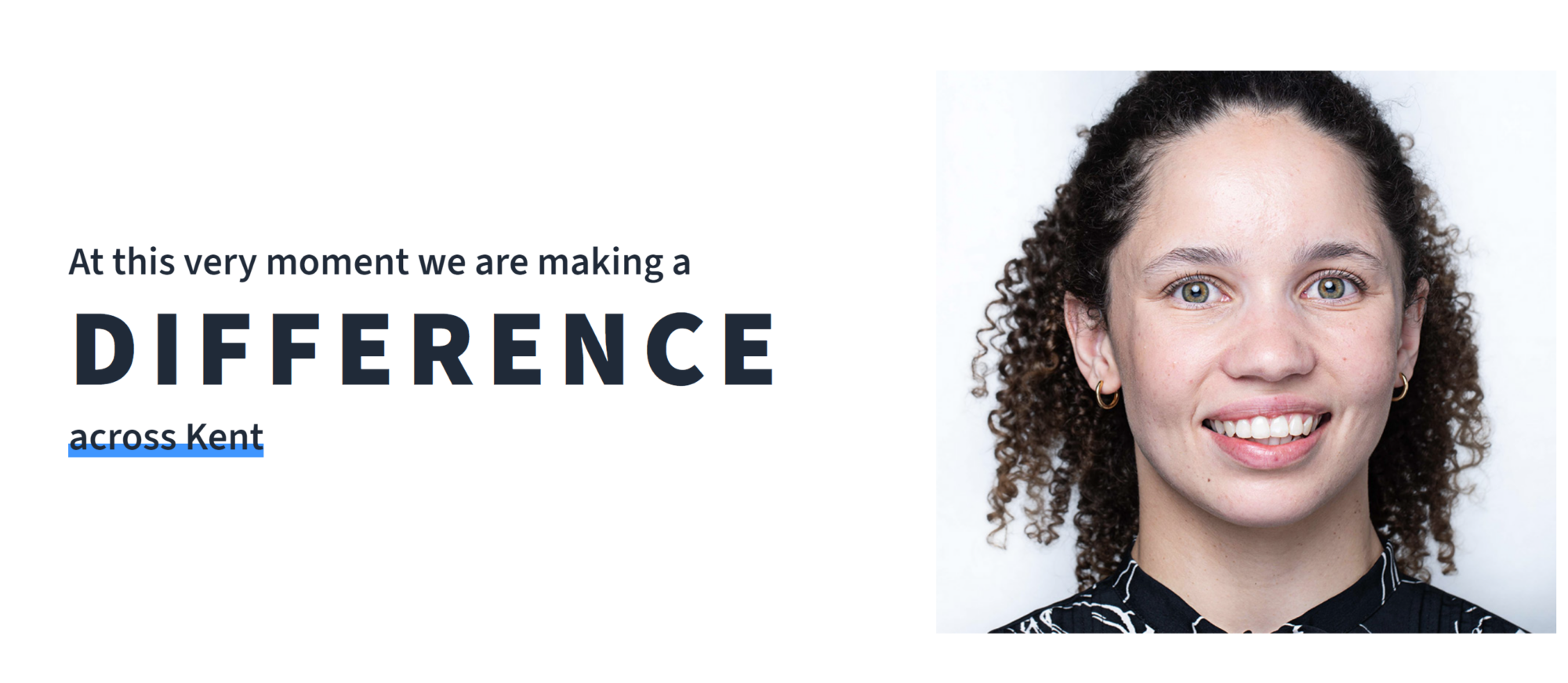How employer brand is the key to successful Public Sector Resourcing. Vet your own now using our handy checklist
Six questions to inform an employer brand audit, to make sure your public sector brand shines like it should…
- Eye-watering salary and huge bonuses? Nope.
- Flexible hours working from anywhere? Not usually.
- The snazziest workplace and shiniest new tools? Probably not.
There’s lots that public sector recruiters can’t compete with the private sector on.
But there’s something magical about working in the public sector – something any public servant knows. It’s a career where you can make a real difference. Where you can change lives. Where you come to work and know it’s never just work.
For the right type of people, that means much more than salary or perks. It’s something worth shouting about.
But not all public sector organisations do. And if you’re not making great use of your employer brand, you’re stuck competing on the things you probably can’t compete on.
Let’s talk about changing that, with an employer brand audit. Here are six questions to ask, to make sure your recruitment is doing your organisation justice.
6 must-ask questions for an employer brand audit
1. Do your job adverts jump out?
Do a quick Google search for any of your common roles and it’s a good bet there are thousands of options coming up. Do your ads blur into the background, or jump out from the pack? That’s the first question your employer brand audit should ask.
You get a millisecond to convince candidates to give you their attention. Are you using your time wisely?
Here’s some stuff to think about:
- Choosing a descriptive, interesting job title
- Using colours that set your ads apart
- Including branded photos and videos
- Breaking up your content with headers and bullets
- Making sure ads work for users with different accessibility needs
Who's smashing this out the park?
Essex County Council are an example of a council who’ve got this spot on. They’ve really set themselves apart with the branding, bright colours, use of video and even named examples of people making a difference. Take a bow!
Indistinguishable adverts were a major problem for Well Pharmacy, who were struggling to stand out among a sea of same-same healthcare ads. Every organisation hiring looked indistinguishable: blue; green; same fonts; text-heavy.
Using Tribepad to gain newfound employer brand flexibility Well introduced their new branding – orange, yellow, and blue – and added videos into their adverts, to show off their personality.
Within three months, Well saw a 92% increase in application volume and improved the calibre of applications. Plus, the team was recognised in a leading industry publication for their stand-out recruitment brand. Not bad, hey.
2. Do your adverts bring the role to life?
Research shows it takes between 21 and 80 job applications for jobseekers to get one job offer. From recruiters’ perspective, we might imagine jobseekers are engaging with a small handful of jobs but that’s just not true. They’re applying for tens, if not hundreds, of similar roles.
What makes yours special?
Building a genuine, unique picture of your job has a positive impact on application volume. But more important, it builds desirability and buy-in earlier too. So candidates are invested in your role with your organisation – so when you do make an offer to great candidates, they’re more likely to accept.
Who can we take inspiration from?
Staffordshire County Council have done an incredible job of this through their new careers website.
Putting real names and faces to roles and showcasing exactly what goes into the job really brings roles to life 👇

3. Do you communicate your EVP well?
“We’re a committed, passionate team working on diverse projects”. Trotting out over-used sentences like that doesn’t do much for your employer brand.
Imagine someone asked you, right now, how your current role differs from your last role. You’d probably have plenty of varied, interesting nuance to add. There’s no right or wrong but working environments are different from one another. Capturing that difference in an authentic way is the heart of an EVP.
How well do you do that, across your careers site, job ads, social media, campaigns, comms, and so on? Do jobseekers have a true sense of what it’s like working with your public sector brand?
If not, now’s the time to work out which stage of the employer branding process needs attention and focus your energies there. For example, do you need to define your EVP, or work harder to communicate it?
Who's got EVP spot on?
Kent County Council have nailed their EVP, making it simple clear and effective on their jobs page.

In the public sector, purpose is your superpower. Help candidates understand the difference they’ll be making.
Educational open days are one tactic that’s worked really well for UK charity, Mencap. Resourcing Manager Ellie Higgins talks about how they run open days across the organisation, to showcase the work that happens in different locations and departments.
4. Do you harness the power of your pack?
This one’s a no-brainer, really. Many public sector recruitment teams are restrained on resources but have a super engaged workforce who really buy into the organisation’s mission.
Leveraging employee advocacy means transforming your small team into an organisation-wide recruiting powerhouse.
Some things worth thinking about in your employer brand audit:
Could you…
- Ask employees to share social content?
- Ask employees to create social content?
- Develop an employee referral scheme?
- Create employee ambassadors?
- Invite team members to recruitment days?
- Create day-in-the-life content following different employees?
5. Is the recruitment journey inclusive and accessible?
ED&I matters for every organisation but especially for the public sector. Public sector organisations represent their community: a representative workforce is crucial to ensure everyone has accessible, quality public services. Diverse, inclusive public sector organisations are the foundation for diverse, inclusive communities.
But there’s still work to be done. Across the top 20 senior management positions in local government organisations, just 3.7% are held by B.A.M.E. leaders, compared to 7% in the FTSE 100, for example.
As part of your employer brand audit, public sector recruiters should examine every touchpoint, both digital and physical. You’re looking to ensure your recruitment process is accessible, inclusive, and non-biased.
When you attract, interview, hire, and retain more diverse people, you build an employer brand based on representation.
Good recruitment technology isn’t the whole answer to building a representative brand, but it’s an important part.
Coventry City Council saw first-hand how the right software can help build momentum on ED&I, seeing an 122% increase in B.A.M.E. candidates since using Tribepad (from 18% to 40%).
6. Is your recruitment process fast, convenient, and modern?
If the recruitment journey is slow, bureaucratic, repetitive, and frustrating, what does that say about your employer brand? Especially when you’re pitted against private sector companies with more resources, who’re often doing a better job.
Public sector recruiters have often spent so long working with clunky, slow software and lengthy checks and balances, they assume that’s just the way things are.
But what if they don’t have to be?
We’re local government – of course we’re going to ask candidates lots of questions. But it just doesn’t feel the same when it’s delivered through this lovely process, with lots of whitespace, designed to feel engaging instead of overwhelming and unwieldy.
Our processes are so slick now, but we’re still completely and utterly safe. We still do all the checks and balances we need, but in a way that doesn’t feel so heavy handed.
Recruitment software designed for the public sector should be able to keep you safe – without sacrificing candidate experience. Think polished, modern, engaging, fast, and flexible. When you’re conducting an employer brand audit, make that your benchmark.
Your process represents your brand: what does it say about you?
Signature Healthcare is a great example. The team increased monthly applications from about 900 to 16,000 (!!) by actively designing a great candidate experience that did their employer brand justice.
Need help showcasing your public sector brand? Talk to Tribepad.
Tribepad is the trusted tech ally to smart(er) recruiters everywhere. Our talent acquisition software is a springboard for faster, fairer, better recruitment for everyone.
Trusted by public sector organisations like the NHS, BBC and numerous local authorities including Staffordshire County Council, Milton Keynes City Council, Coventry City Council, Surrey County Council, and Kent County Council, 25 million people in 16 languages use Tribepad.




